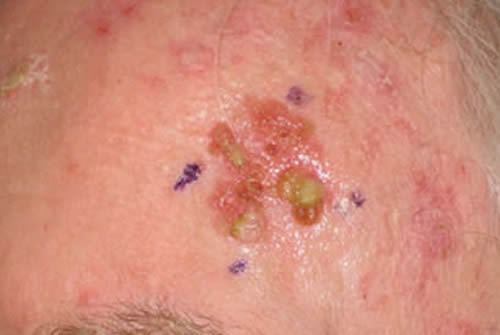Skin cancer is one of the most common types of cancer and can be deadly in some cases. There are a variety of types and severities of skin cancers and therefore, a variety of ways it can be treated. If you are diagnosed with skin cancer, it is imperative that you seek treatment from an experienced dermatologist such as drBernardRaskin in Bakersfield. You need an expert in the field to help you decide upon the safest and best treatment plan for your health.
Topical medications
A non-invasive treatment is the use of cream or gel medication rubbed onto the affected area to block cancer cells from growing and multiplying. Possible side effects include redness or swelling in the area.
Freezing
Also called cryosurgery, this method involves using liquid nitrogen to destroy the tumor. The freezing procedure causes the tumor to crust over and eventually fall off. It does not entail cutting but may still leave a scar. Freezing is most often used for precancerous growths.
Curettage and electrodessication
A sharp instrument called a curette may be used to scrape off the growth, along with an electric current afterwards to destroy remaining cancer cells. The procedure may need to be done several times to ensure all skin cancer cells have been eliminated. It may leave a scar where the procedure was performed.
Excision surgery
Your physician may use a scalpel to excise the tumor and surrounding tissue as needed. Stitches are likely required and a sample of the tissue is sent to a lab for complete analysis. If skin cancer cells are still present upon analysis, a second procedure may be advised. A skin graft is sometimes needed if a large area of skin is removed during excision.
Mohs micrographic surgery
An alternative to traditional excision surgery is Mohs micrographic surgery, which entails using a surgical tool to remove the growth in thin layers. Each layer is evaluated under a microscope to see if cancer cells are present. If so, the process is repeated until the layer shows no more cancer cells.
Photodynamic therapy
Your dermatologist applies a chemical that reacts to light to the skin cancer growth and then exposes it to light that kills cancer cells but allows healthy cells to survive. Redness and swelling are possible afterwards, as well as temporary light sensitivity to that area.
Radiation therapy
Radiation may be recommended to destroy the cancer cells. The procedure is not unlike having an X-ray but with even stronger radiation. This is sometimes advised when surgery is not the ideal option. Side effects can include nausea, hair loss, fatigue, or skin issues.
Chemotherapy
A well-known cancer treatment, chemotherapy requires injecting drugs into the body through an IV so that the medication goes through the bloodstream to attack cancer cells. It is effective in treating cancer that has spread in the body. Side effects may include nausea, vomiting, hair loss, fatigue, and infection risk. These side effects usually dissipate after chemotherapy treatments end.


